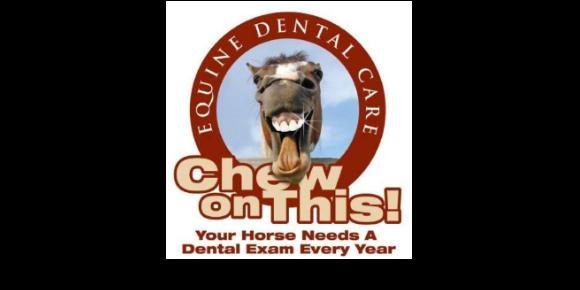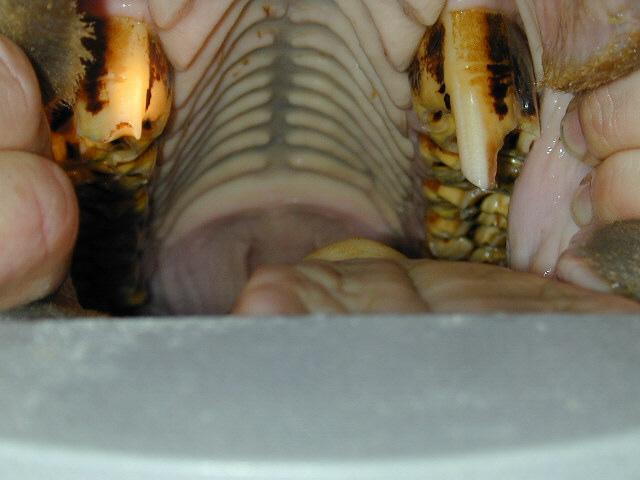
February is dental month at Alpine Equine Hospital and so there is no better time to talk about the importance of a thorough oral exam for maintaining your horse’s health. Most horse owners know that their horse’s teeth need to be “floated” routinely to help them chew properly and prevent painful ulcerations from forming on their cheeks and tongue from sharp points. But enamel points are just one of the many forms of pathology that can cause problems in your horse’s mouth, and the vast majority of these problems are only identifiable during a thorough, sedated oral exam. In this article we will discuss the equine solution to eating a forage based diet and why that makes routine dental care so important. We will also discuss signs of dental disease in horses, what problems your veterinarian may identify on a sedated oral exam, and what can be done for these common oral conditions to improve your horse’s quality of life and health. Join us as we unpack why equine dentistry is so much more than sharp points!
Horses evolved from small woodland browsers to the grassland grazers we know today largely in part to adaptions of their dental anatomy. To be able to eat roughage for up to 16 hours a day, horses’ teeth evolved from brachydont, short crowned teeth with well developed roots, to hypsodont, long crowned teeth with small roots. Horses have six main chewing teeth on top and bottom with reserve crowns that are up to 9-10cm in length that erupt 3mm per year to provide them with sufficient chewing surfaces throughout their lifetimes. The continual eruption means that small changes to health of the surrounding gingiva, bone and tooth itself can influence the eruption rate and result in big changes over time. Many of theses changes occur on the chewing surface of the tooth, the side of the tooth against the cheeks or in between the teeth. These areas can only be observed and safely accessed when a horse is well sedated, has a speculum in place to keep the mouth open, and a mirror and strong light source are used to directly visualize these difficult to access areas.
Let’s discuss some of the most
common oral pathologies that your veterinarian will be looking for during their
oral exam. Many of the most common pathologies are caused by malocclusions, or
abnormal positioning of teeth, either due to the horse’s head anatomy or
abnormal positioning of the tooth with normal surrounding anatomy. Many horse owners
have heard of “hooks”. These overgrowths most commonly occur in the upper
second premolars and lower last molars when a horse’s mandible is positioned
slightly further back than the maxilla/upper jaw due to its conformation. This
results in a lack of contact of the front of the upper second premolar with the
corresponding lower second premolar. Since the tooth continually erupts and
needs a tooth below it to wear down appropriately when chewing, the front of
the upper second premolar becomes overgrown and forms a “hook.” The same
process occurs in the back of the mouth but the lower last molar is not
contacting the upper and forms a steep hook on the back of the last lower
molar. If these hooks are not reduced periodically they become longer and
longer as the tooth continues to erupt and can traumatize the soft tissues of
the opposite arcade causing severe pain. The hooks at the back of the mouth are
particularly difficult to access and are best reduced/floated down when the
horse is well sedated with their mouth held open with a speculum to facilitate
direct visualization and treatment.  Hooks on a horse's upper 06 teeth
Hooks on a horse's upper 06 teeth
Horses can also get cavities (infundibular caries) in their upper chewing teeth that can compromise the integrity of the affected teeth. Their upper cheek/chewing teeth have two compartments filled with a strong substance called cementum that helps provide strength and internal structure for the tooth. They can develop cavities within their infundibula that can weaken the structure of the tooth and potentially cause it to fracture and/or advance into the surrounding pulp horns, which can cause pain and infection. Mild cavities often stay the same for years, but should be observed and documented to watch for any signs of progression (Figure 1: Grade 1-2). Once a cavity has progressed so far as to disrupt the integrity of the tooth it needs to be removed/extracted (Figure 1: Grade 4). Since cavities can allow infection to extend the length of the tooth, horses can develop nasal discharge and infection of their sinuses since the tips of the roots are right next to their sinuses. If your horse has thick, smelly nasal discharge on one side, infection from a cavity could be one of the causes.
Teeth fractures are another form of pathology that can be detected on a thorough, routine oral examination. Horses’ cheek/chewing teeth have anywhere from 5-7 pulp horns that contain the tooth’s blood and nervous supply. Damage to these pulp horns results in pain and infection, which can lead to the death of all or part of the tooth. When this occurs the tooth usually needs to be extracted. The most common type of tooth fracture is a slab fracture that goes through the outer two pulp horns closest to the cheek on the upper arcade. This type of fracture is usually not evident with a quick glance in the mouth since the fracture is right against the cheeks. A dental mirror or oroscope is maneuvered between the cheek teeth and check to look for any slab fractures. When a fracture or significant cavity is detected on oral exam, skull x-rays are the next step to assess the health of the bone and sinuses surrounding the affected tooth. This helps your veterinarian confirm that the tooth needs to be extracted and helps them plan how to most successfully extract the tooth.
So now that we have covered some of the conditions that can occur in your horse’s mouth, let’s discuss what changes in your horse’s behavior can indicate they have a dental problem. A recent study that evaluated horses presenting to a teaching hospital for extractions found that nasal discharge from one nostril was the most common reason for evaluation. As we previously touched on, the roots of the upper fourth premolar through last molar are millimeters away from the sinuses. When an infection and/or trauma occurs in the tooth it can make its way to the tip of the root and create widespread infection in the sinuses which then drains foul smelling discharge/pus out the nose. Other common clinical signs of dental disease include swelling of the face (maxilla or mandible), drooling, bad breath, and changes while under saddle. These changes include headshaking, reluctance to take the bit, poor performance and/or demeanor while working, or abnormal head carriage. These signs occur due to dental pain. But it is important to note that dental disease can cause no appreciable changes in behavior at all! Many of the painful conditions that we discussed are often identified only during a routine oral exam.
The dynamic nature of equine dental anatomy and physiology makes routine oral examination an integral part of their overall veterinary care. We recommend that your horse have a complete oral examination and float performed at least once yearly to optimize their chewing capabilities and identify and treat any problems that arise. Older horses, late teens and over, benefit from being examined every 6-12 months to help preserve their dental health as they and their teeth age. Horses can be very adept at hiding oral pain and a sedated, well-lit examination with a speculum allows your veterinarian to access those otherwise out of sight but so important places. Thank you for joining us on our exploration into equine dentistry. Like the visible crowns their mouths, that’s just the tip of the iceberg!
